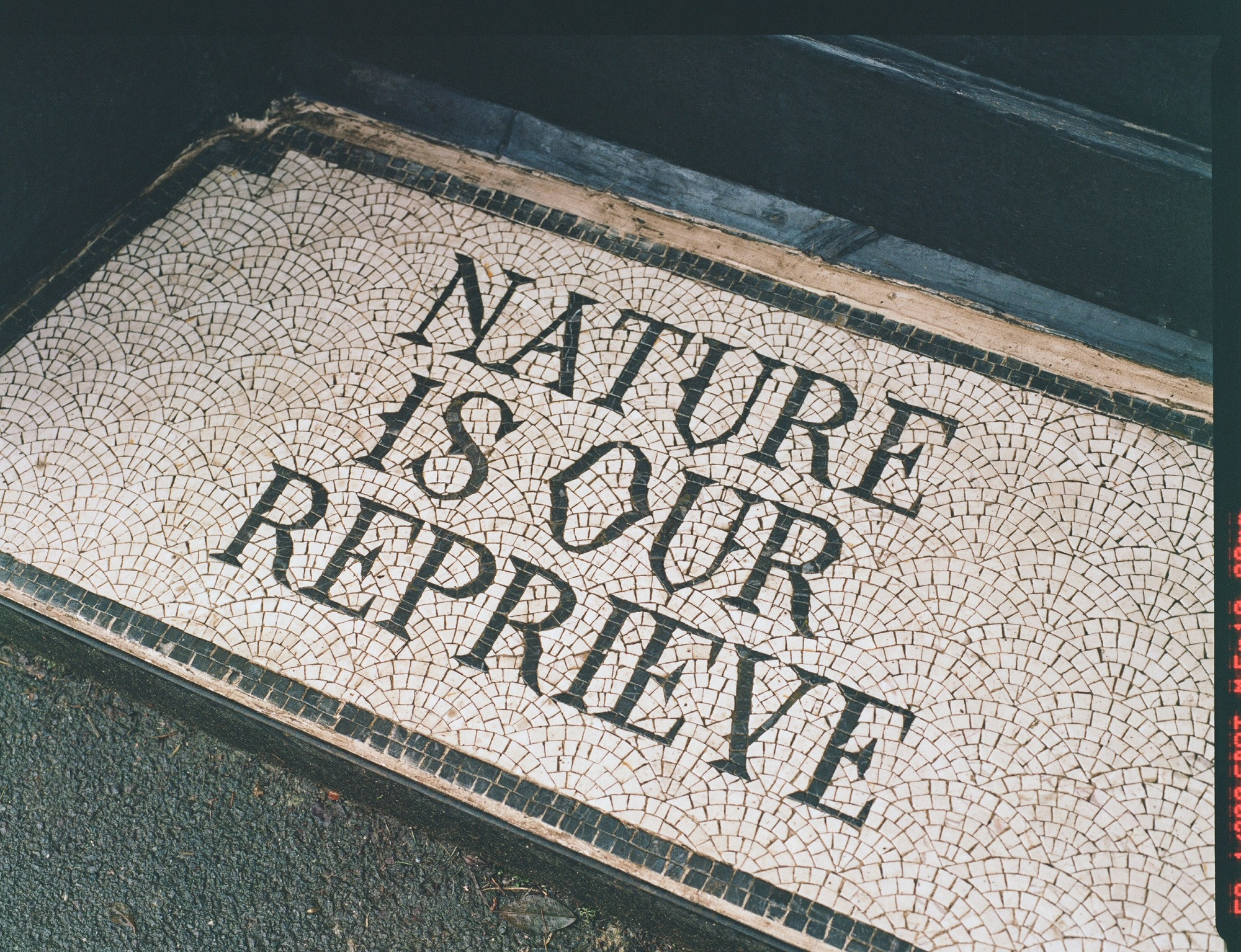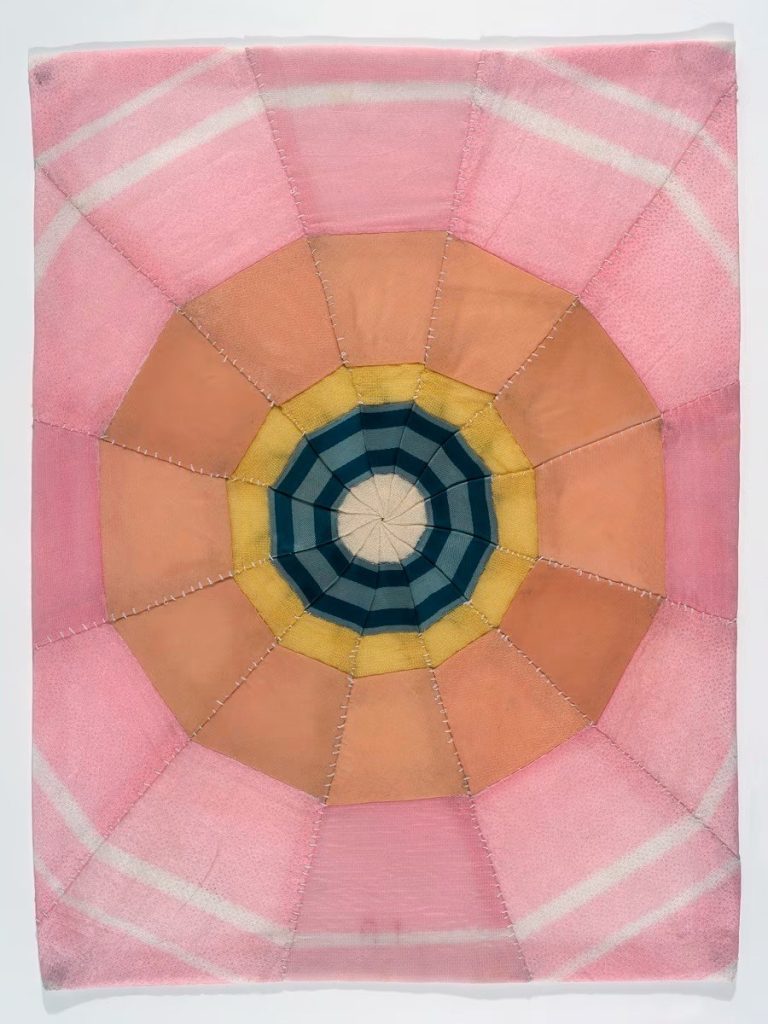
ECHO. Wrapped In Memory
Updated: 2023/10/20
- Interview
- Olivia Gagan
How did the collaboration and the concept for 'ECHO: Wrapped in Memory' come about?
Simone Rocha: I’ve loaned archive pieces for MoMu’s exhibitions in the past, and they have also acquired a few looks for their permanent collection. [Exhibition curator] Elisa approached me to participate in an upcoming show based around memory and clothing, and wanted to see if I would contribute in a bigger way. I was honoured, especially to be alongside Louise Bourgeois and Anne Teresa de Keersmaeker.
Elisa De Wyngaert: It’s a subject I’ve been dreaming to curate for a while. The concept of ECHO is not about bombastic, monumental stories, but ordinary and intimate ones: from infancy and childhood, to ageing and looking back.
Some things are universal. We were all born. We were all children. If we are lucky, we will grow up and then old. We will reflect and look back. It's such a beautiful thing that we were able to collaborate with Louise Bourgeois’ estate, The Easton Foundation, Simone Rocha and her amazing team and Anne Teresa De Keersmaeker and her team at Rosas. I reached out to all of them and am still immensely grateful they believed in the story. There’s a mutual respect and affinity between them all.
Can you talk about some of the key themes of ECHO? What is the argument or the idea at the heart of it?
Simone Rocha: ECHO is about the intimate connection between clothing and memory, also wearing and mending, and clothing living and breathing on the body.
Elisa De Wyngaert: The exhibition opens where life begins: in the cradle. It looks at motherhood and mothering in a wider sense, and at the tactile memories of early life. For a long time, Louise Bourgeois had struggled to be recognised in a male-dominated art world. Though she did not identify as an explicitly feminist artist, she brought the subjects of motherhood and domestic life into her art in an unprecedented way. Simone also processed the birthing experience and her altered reality as a new mother through her collections.
The exhibition moves on to a chapter named after a work by Louise Bourgeois called ‘Follow The Child Within’, which is about looking back to witness how time passes by. The child lives on in the adult though, in memory that is more feeling than clear image. Louise Bourgeois, Simone Rocha and Anne Teresa De Keersmaeker frequently take us back to their childhoods. Bourgeois wrote: “All my work in the past 50 years, all my subjects, have found their inspiration in my childhood. My childhood has never lost its magic, it has never lost its mystery, and it has never lost its drama.”
In the closing chapter of the show, we reflect on the way MoMu preserves memories in its collection. The museum’s storage facilities hold objects that are closely connected to people’s lives. These objects show decay, stains and creases…we show how MoMu’s Collection team cares for them. This idea of intimate, domestic memories, of aging, and the importance of allowing things to be imperfect are at the heart of the exhibition.
What was the importance of having an intergenerational group of artists involved?
Elisa De Wyngaert: I really value the dialogue between artists of different generations – I find it exciting. I also love to bring together artists in different stages in their careers. Some of them, like Maya Barrera and Laila Gohar, became mothers whilst preparing their installations for ECHO. Their recent life experiences transformed what they created. There was an element of surprise for me as well, which I always love the most. Marianne Berenhaut, an artist who is now 90, has been working on an impressive oeuvre for over six decades. For a long time, she failed to get recognition from the art world. She lost her family during World War II, a loss that has deeply influenced her work. An aura of mystery, sadness, loss and poignancy permeates her sculptures and installations. I love how all these artists’ work embodies their personal memories – the good and the bad – but above all they invite us to make our own associations when looking at their work.
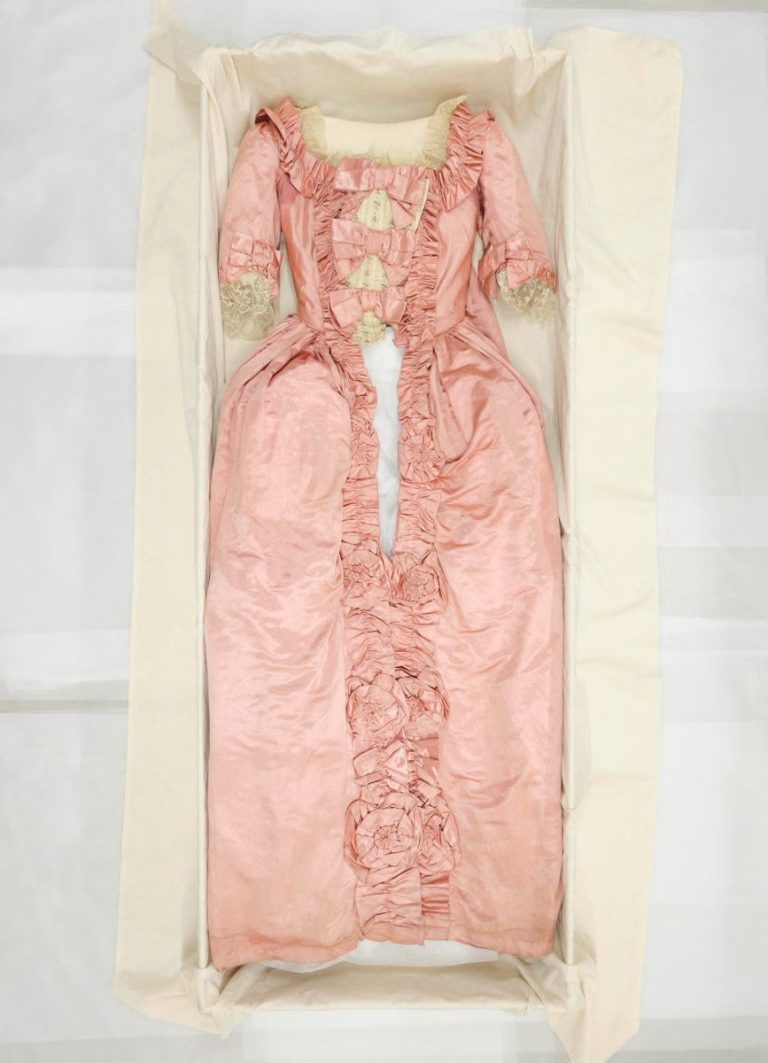
Gown made by C. Palm, The Hague, c.1900-1905, MoMu Collection inv. T12/1309/J236 © MoMu, Photo: Frederik Vercruysse
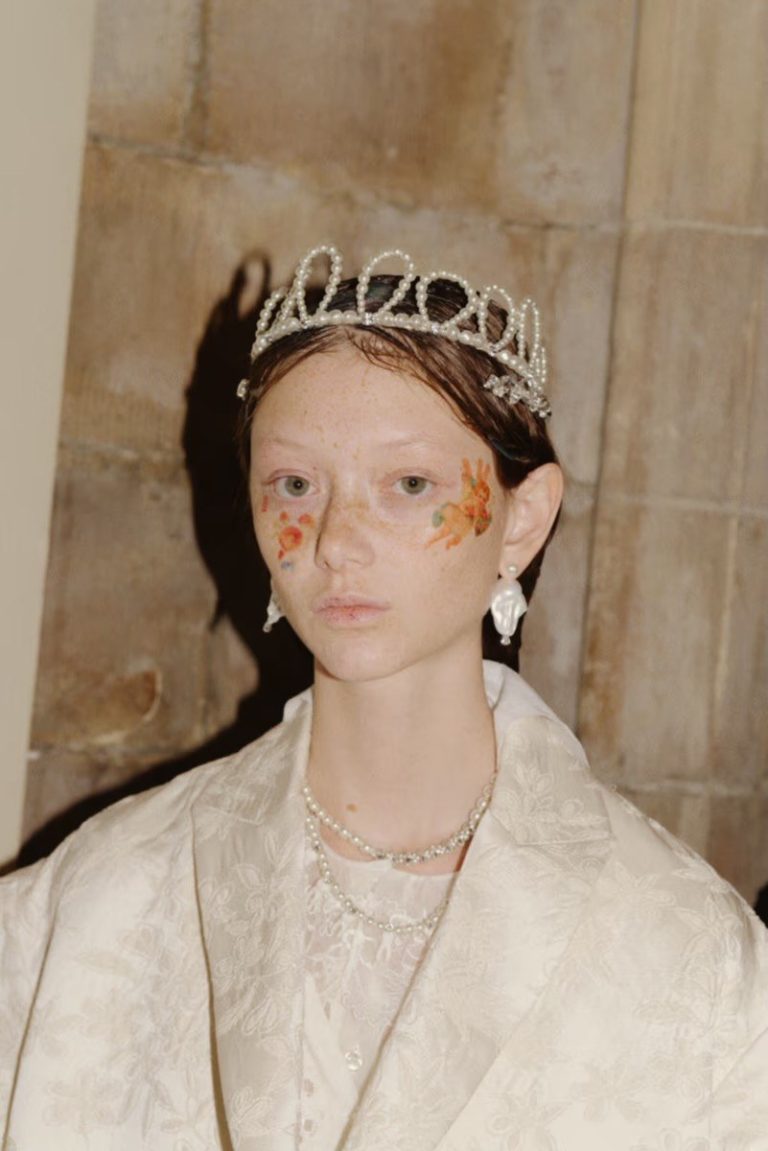
Simone Rocha, Spring-Summer 2022 © Photo: Jacob Lillis
ECHO looks back, and explores the powerful connection between clothing and memory, but it feels like it also intersects with and challenges the present day – where billions of items of clothes are unethically produced, and then only worn once. Or never worn at all, and simply burned or buried. Or worn, but not loved or repaired. This exhibition seems to fight for the idea that clothing should be kept and cherished. Is that a correct assumption to make?
Simone Rocha: Yes, the exhibition features pieces from MoMu’s collection, like silk socks which were darned over and over, and a little dress from WWII which shows the tiny perfect stitches done for mending. There are also a few pieces from [Belgian dance cherographer] Anne Teresa de Keersmaeker’s archive, which shows the many repairs done to her costumes over the years.
Elisa De Wyngaert: Yes, definitely: restoring, cherishing, repairing, archiving is very much at the centre of the exhibition. Objects have a soul, but we all, including me, have way too soon parted with some.
Which parts of ECHO hold the most emotion for you?
Elisa De Wyngaert: ECHO closes with the incredible sculptural installation, Blue Days (1996) by Louise Bourgeois, which has never been shown in Europe before. The work belongs to a series of pieces in which Bourgeois conjured her past selves, her childhood and family members, invoking them by the clothes she had once worn. She wanted to make sure that her memories would not be lost. Over decades, Louise Bourgeois accumulated clothing that included garments that belonged to her mother, as well as a wide selection of her own clothes dating back to childhood. The creases in these garments are evidence of her life. We got clear instructions to keep the wrinkles and creases intact.
There’s a Louise Bourgeois quote which accompanies the exhibition which is very moving. “I have never thrown away a pair of shoes of mine in 20 years [...] The pretext is that they are still good – it’s my past and as rotten as it was, I would like to take it and hold it tight in my arms.” What does this quote symbolise to you, and were there other people, thoughts, songs books or memories that served as key catalysts or inspirations for ECHO?
Elisa De Wyngaert: An amazing tip I got from Simone during a meeting was that Louise Bourgeois recorded lullabies when she was already in her late eighties. To have her older voice present in the exhibition space, is a very intimate thing. Janina Pedan was also a great inspiration to me. She did a fantastic job, so sensitive, tactile and beautiful, and there is a sense of humour in her work too.
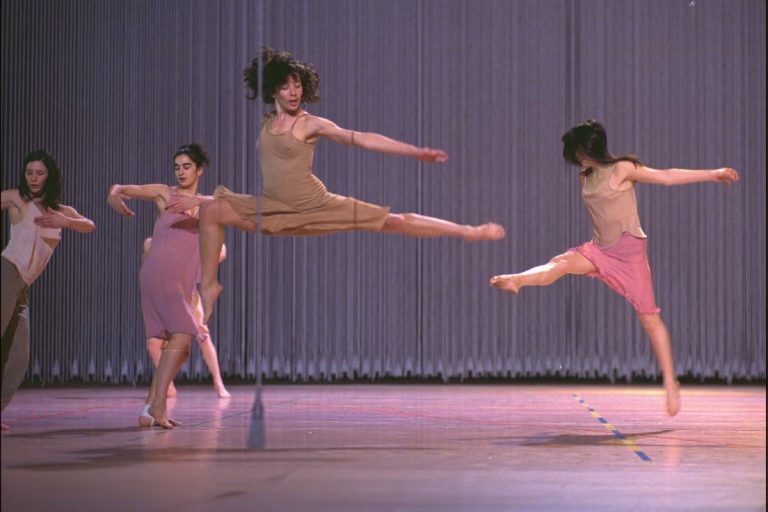
Rain, 2001, Cynthia Loemij, Rosalba Torres, Alix Eynaudi, Fumiyo Ikeda © Foto: Herman Sorgeloos
Fashion and clothing are often thought of as superficial... yet ECHO explores the intimate connection we can forge through our clothing and the memories they can hold. How can people have a better relationship to their clothing, one which is enriching and meaningful?
Elisa De Wyngaert: Longing for something is important, instead of instant buying. But it seems only normal that our behaviour and relationship to our garments changed so drastically in the last few decades... replacing became easier and cheaper than restoring. We have become so used to replacing things when we could prolong the life span of the objects in our lives.
I am still a work in progress myself, I love fashion, but I found the objects and pieces from the MoMu Collection on display in the exhibition to be an important reminder and inspiration. They are in different stages of degradation with their flaws, discolourations and traces of damage, and with just as many intriguing stories.
Simone Rocha: I’m always quite sensitive to the past, while feeling more detached in the present. That sensitivity I like to explore with memory, history, nostalgia, remorse, and emotion and then I pull those ideas into the present, into reality today and see how that reveals itself. It can come from emotions, a memory, and a storytelling narrative but then contrasted with a fabrication or a material, a hardness or a reality today to create something sensitive and strong together.
What do you want visitors to the exhibition to take away from it?
Elisa De Wyngaert: Louise Bourgeois famously described how she had her ‘blue days and pink days’. On her pink days she felt an intense surge of creativity, optimism, and affirmation, while blue days were days of melancholy, contemplation and withdrawal. In ECHO, I wanted to welcome these opposing but interconnected forces that shape our everyday experiences and memories. Pink and blue, a lens to look at our memories, and the garments that hold them.
Simone Rocha: To feel the sensitivity in the works – but also the power of them.
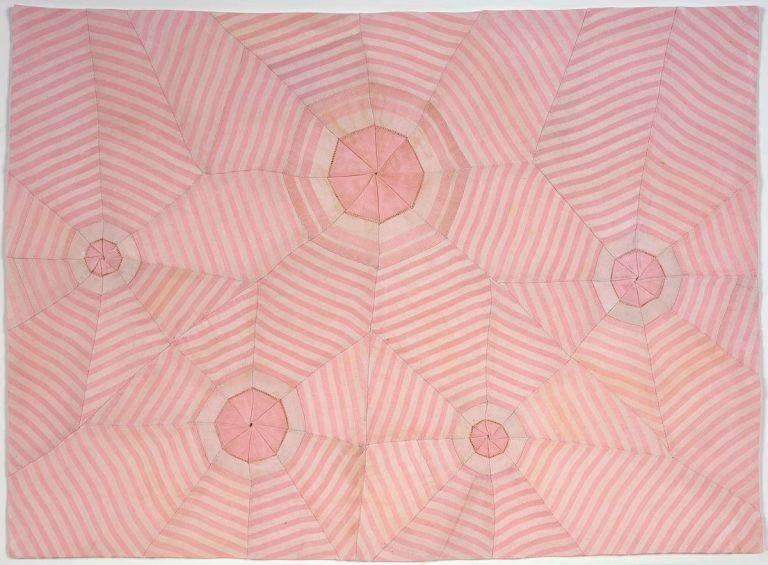
Louise Bourgeois – Untitled, 2007. Photo: Christopher Burke, © The Easton Foundation/SABAM Belgium 2023
Related Articles

Liberty 150 x150 curated by Leith Clark: The Founder Interviews

Liberty 150 x150 curated by Leith Clark: The Founder Interviews

Liberty 150 x150 curated by Leith Clark: The Founder Interviews

Liberty 150 x150 curated by Leith Clark: The Founder Interviews
